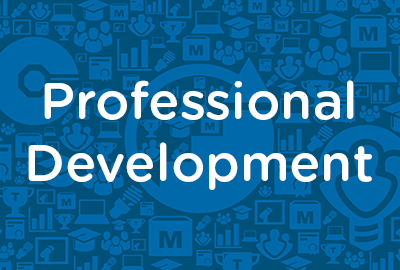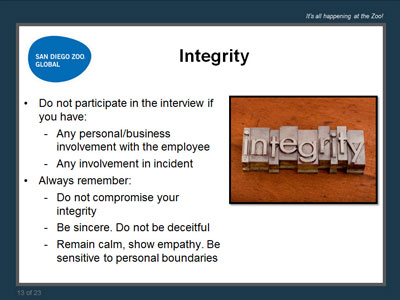 |
Quality Management: Understanding Current Performance |
1.00 |
In this course you will learn to: identify types of flow charts and create and analyze a flow chart, create and analyze a check sheet, create and interpret a histogram, create and interpret a run chart, and identify characteristics of a control chart. |
 |
Sales: Prospecting |
0.75 |
In this course, you will learn how to define your target market and customers for effective prospecting, how to identify various prospecting methods that can be used to obtain leads and sales, and how to develop a script for phone calls. |
 |
Budgeting: Budgeting Fundamentals |
1.33 |
A typical budget contains information for a single year and is updated and revised periodically. Each company creates a budget that fits its unique needs. A budget can be used for many purposes, but its primary functions should be to support strategic goals and to help identify when actual results deviate from what was predicted. |
 |
Customer Service: Customer Service Basics |
0.75 |
It is amazing how much time, effort, and money is invested in sales education. However, customer service is not given the same level of resources. If you think about selling as a process, the final phase is not closing the sale, it’s serving the customer. After an effective sales process awards you a new customer, it is customer service that will determine whether your customer stays with you. |
 |
Managerial Leadership: Planning for Change |
0.50 |
In order to understand the need for change, you must remember one thing: change is constant. Change is a necessary response to an active force. The active force can either be a pressure, which you can attempt to manage in a step-by-step manner, or a crisis, which requires your immediate attention.
In this course you will learn to: identify the phases of the change process, and communicate change and identify the benefits of change. |
 |
Project Teams: Decision-Making in a Project Team |
1.00 |
Once a project team comes up with options for implementing a project, they must decide which option to use. There are various methods the team can use to make a decision, ranging from authority decision-making to consensus.
In this course you will learn to: use the various methods of decision-making available to project teams, and resolve conflicts and achieve consensus in a project team. |
 |
Project Management Essentials: Defining the Project |
0.50 |
This course will focus on how to identify the participants and the influence of stakeholders on a project and project objectives, benefits, and constraints. |
 |
Business Ethics: Organizational Ethics |
1.50 |
In this course you will learn to: identify the need for organizational ethics and the types of ethical issues that arise in various functional areas, promote and maintain ethical principles in business, develop a corporate code of ethics and execute an internal audit, identify types of corporate social responsibilities and handle conflicts in responsibilities when they arise. |
 |
Creativity and Innovation: Fostering A Creative Environment |
1.00 |
Creativity is the ability to look at a situation from every possible angle and determine potential ideas, solutions, or outcomes. Employees with this ability add value to an organization by increasing its efficiency and productivity. This is why board members, stockholders, managers, and other employees want to recruit and retain creative individuals. Everyone in an organization benefits from the recruitment of creative people.
When a candidate begins to search for a job or becomes aware of available positions, the candidate will form an opinion about your company based on promotional material, media articles, stories, and word-of-mouth. Creative people look for flexibility. Although managers might hire creative people, some managers still tend to stifle employees’ creativity with excessive rules and directions. Creative candidates must believe that they will have the flexibility to be innovative, or they will look elsewhere for employment.
In this course you will learn to: recruit and retain creative individuals, and maintain a creative environment. |
 |
Organizational Communication: Communication Basics |
1.25 |
Good internal and external communication is crucial to any organization’s success.
In this course you will learn to: communicate effectively, define the theories of management, identify organizational types and characteristics, and plan communication flow. |
 |
Business Problem Solving: Critical Thinking and Information Analysis |
1.34 |
Critical thinking is the ability to understand how others think as well as how your own thinking process works. It also includes the ability to objectively evaluate the evidence used to support beliefs or arguments that lead to conclusions. It is an important business and problem-solving skill. Critical thinking helps you to evaluate various methods of reasoning that can be used in problem solving.
In this course you will learn to: use reasoning and logic to think critically, define and use quantitative analysis techniques, and define and use qualitative analysis techniques. |
 |
Interviewing Skills: Following Up |
0.67 |
Once you have conducted the interview, you need to do a follow-up and perform a self-evaluation of your interviewing skills.
In this course you will learn to: complete follow-up tasks after an interview. |
 |
Coaching: Interpersonal Meetings |
0.75 |
As a coach, your communication skills are critical to your success and the employees you are coaching. In many office environments, it can be tempting to get through the day without much personal contact by relying on technology. However, nothing can replace the benefits of personal interaction, or face-to-face communication. |
 |
Correcting Performance Problems: Disciplining Employees |
1.67 |
Discipline is proactive, as opposed to punishment, which is reactive. Punishment provides a consequence to an action that is deemed unacceptable, whereas discipline is designed to exchange undesirable behavior for satisfactory behavior.
The purpose of disciplining an employee is twofold:
1. To correct or eliminate undesirable behavior, and
2. To provide training that improves or strengthens performance.
In this course you will learn to: keep a disciplinary perspective, determine the cause for disciplining an employee, and prepare for conducting a disciplinary meeting, maintain a positive rapport, avoid pitfalls during a disciplinary meeting with employees, and keep meetings productive, and monitor employee performance and conduct a follow-up meeting with the employee. |
 |
Project Management - Basic: Project Initiation and Scope Planning |
1.00 |
This course will cover how to initiate a project, identify project deliverables, use effective project selection methods, identify project constraints, and write a project charter. This course will encourage you to create a scope statement, create a statement of work, and follow a scope management plan to prevent scope creep. |
 |
Understanding the Basic Concepts of HIPAA |
0.75 |
This course will give participants a basic understanding of the Health Insurance Portability and Accountability Act (HIPAA). Participants will learn what HIPAA is, how it changes the way we do our work, federal vs. state standards, patient rights, the purposes of HIPAA compliance and more. |
 |
Time Management: Technology and Time Management |
1.00 |
This course will focus on how to use computer and telephone technologies to save time instead of wasting time and maintain a reasonable workload by saying “no” when appropriate. |
 |
Team Participation: Communicating in Teams |
0.50 |
This course will focus on how to understand the factors affecting team communication, understand the elements of communication and use verbal communication, and communicate supportively and effectively. |
 |
Sales Skills: Advanced: Studying the Market |
0.75 |
This course will focus on using sales strategies, analyzing markets and competitors, and researching clients. |
 |
Sales Management: Managing Sales Territories |
0.50 |
This course will focus on identifying the steps for choosing the best territory strategy and identifying the factors to consider when conducting territory reviews. |
 |
E-Mail Etiquette: E-Mail Features and Security |
0.50 |
In this unit, you will learn about the features of e-mail programs. You will learn about the importance of attachments and identified the guidelines for attaching files to e-mail messages. You will also learn to prioritize messages by labeling them. This course will cover how to create signature files. You will also learn some important features of e-mail include folders, filters, address book, and the print feature. You will also learn that e-mail messages can be tracked, searched, and downloaded. Finally, you will learn about securing your messages, encrypting messages, and using digital signatures. You will also learn the importance of creating effective passwords to prevent others from reading or altering your e-mail. |
 |
Employee Performance: Feedback |
1.67 |
Giving feedback facilitates organizational growth and development. Feedback helps improve job performance while promoting professional and personal growth in employees.
Managers who know how to give feedback allow employees to advance themselves and grow as individuals and workers. Through proper guidance, employees acquire the necessary skills to meet their job requirements. Feedback helps build interpersonal relationships between managers and employees, while improving their self-esteem and job satisfaction.
In this course you will learn to: identify the focus of feedback, and give and receive feedback effectively, provide positive and constructive feedback, monitor performance after providing feedback, identify communication styles, and manage difficult feedback sessions, and identify when to avoid giving feedback. |
 |
Change Management: Moving Forward |
0.50 |
This course will cover how to identify the information required and the common responses to the new beginnings phase and identify what people need during this phase. You will also learn how to identify the strategies and communication guidelines to manage the new beginnings phase. |
 |
Conducting World Class Employee Investigations |
1.00 |
Employment litigation and claims in recent years have cost employers billions of dollars. Employers must find ways to reduce their vulnerability to such claims. Often times, employer liability hinges on the quality of the company's investigation into complaints of discrimination, harassment, or other claims of workplace misconduct. In fact, an important consideration in an employee's decision to ultimately file a lawsuit or claim is whether the employer conducted an effective workplace investigation. Join San Diego Zoo Global's Associate Director of Human Resources for a dynamic and informative workshop on how to conduct effective workplace investigations that will protect your organization and reduce potential litigation costs. This comprehensive webinar will include a discussion about:
- A step-by-step approach on how to plan and conduct workplace investigations
- A practical demonstration of effective interview techniques
- How to anticipate and respond to legal and practical issues that frequently arise during the course of investigations
- Preparing bullet-proof documentation to support the investigation findings and recommended actions |
 |
Strategic Decision Making: Decision Options |
1.17 |
Before you begin generating options for a business decision, you should take time to understand the decision you’re going to make. You can increase and improve your options by using available techniques and by avoiding pitfalls. When planning to make a decision, you might generate other options, and compare them without considering which approach you should use to make the decision. By failing to consider your approach, you might select one of the options without considering all the necessary information. This lack of information can prevent you from recognizing and considering some of the best options.
In this course you will learn to: identify the techniques for generating options and improving the quality of your options, and evaluate your options and identify the techniques for making a final decision. |


























